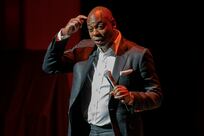Q&A:Back when cash was king
What caused consumer debt to grow so big in the US? There are numerous factors, but the common denominators were government policy, profit-seeking by both banks and industrial companies as well as plain old American ingenuity.
How has the business of credit changed over time? In the early days of the 20th century, consumer credit was not a good business. Average consumers did not take on debt the way we do today, and the first cars were actually paid for in cash. The credit ball started to get rolling when entrepreneurs of various stripes saw opportunity in the personal loan business. A series of encouragements by the US government after the Great Depression and the rise of mass consumerism after the Second World War led to the widescale popularisation of mortgage lending and all kinds of other credit, from credit cards to home equity loans and department store credit accounts.
What role did investors and Wall Street play? They came to the fore in the post-war era. Not really until the 1970s did investment banks and the investors they represented play a dominating role in the debt of American consumers. The touching-off point was a well-intentioned effort by the government to reduce poverty and invest in cities that resulted in the birth of mortgage-backed securities. These were sold directly to investors, and a bout of creativity by federal agencies and bankers helped the market grow.
Debtor Nation: the History of America in Red Ink by Louis Hyman, Princeton University Press, 2011
The US's addiction to debt was responsible in large part for its economic downfall over the past three years. The rhetoric of the financial crisis was complex, but the underlying truth of it was simple: people borrowed too much. They were overly optimistic that rises in wages and economic growth would be sufficient to pay off their supersize debts - an attitude that financial firms and the US government were only too eager to reinforce.
In Debtor Nation, Louis Hyman builds a wider frame around that situation. To be sure, he dwells with relative brevity on the current condition of the US economy and the country's new generation of cash-strapped consumers. But his book does a splendid job unpacking the origins and evolution of credit and debt in the US, an effort that should give news consumers a new and useful perspective on the American consumer.
Hyman starts with the origins of the modern debt economy in the 1920s, when credit to consumers was the province of small-time shopkeepers who offered it reluctantly and unprofitably. Loan-sharking made lending an increasingly attractive business, and the growth of the car industry and car finance made it a necessary one for some of the country's biggest companies.
That growth, in turn, pushed entrepreneurs to find new ways to use credit - and new ways to buy and sell it. Government regulation, coupled with government institutions and programmes that came with the New Deal, helped propel debt to new heights. The post-Second World War era saw the emergence of consumer debt on a mass scale. As the market grew, so did the creativity with which mortgages, credit cards and other forms of debt were diced, sliced and repackaged for consumers and investors alike.
Debtor Nation is an academic work, not a popular history. Nonetheless, Hyman tells the story of America's debt obsession engagingly and without an overabundance of jargon.
Top 5: Business books.
1 Onward, by Howard Schultz (Rodale Books).
2 Enchantment, by Guy Kawasaki.
3 Tribal Leadership, by Dave Logan, John King and Halee Fischer-Wright (Harper Paperbacks).
4 In the Plex, by Steven Levy (Simon & Schuster).
5 Poke the Box, by Seth Godin (The Domino Project).
Source: Source: Amazon.com
The Quote: Don't let your mouth write no check that your tail can't cash. Bo Diddley, the American musician





